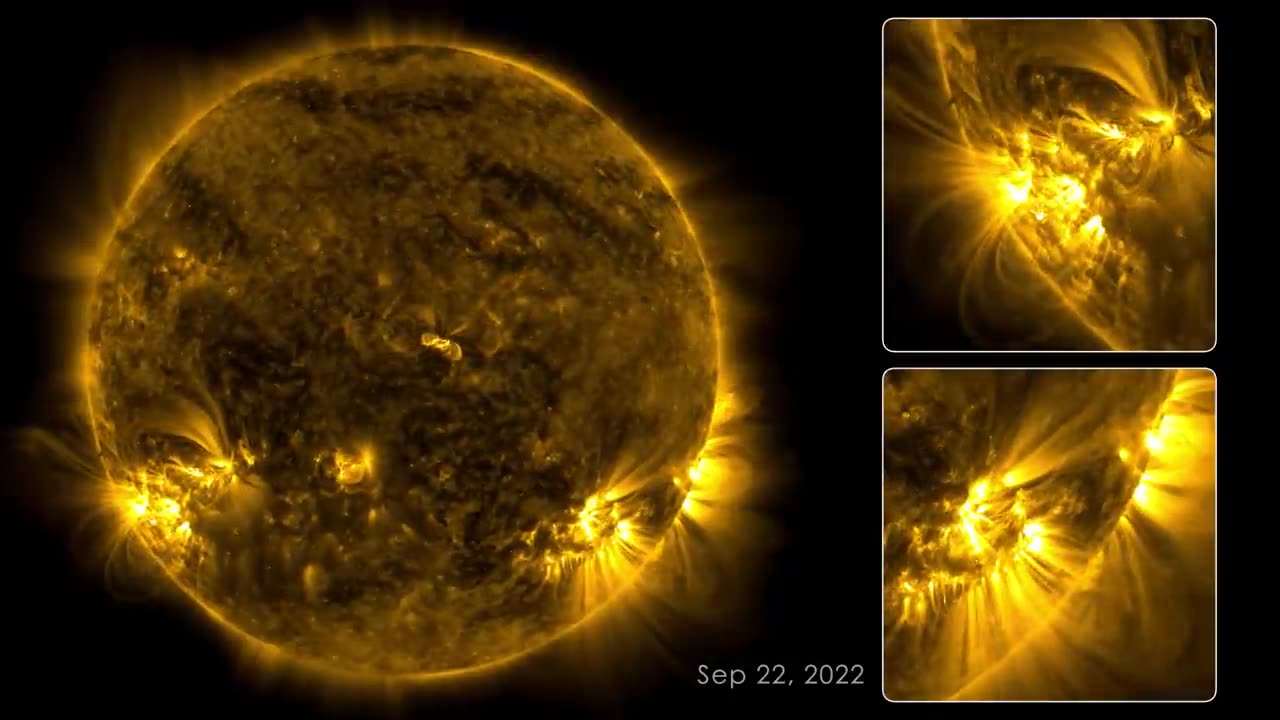Premium Only Content

133 Days Roaming the Sun
This time-lapse chronicles the dynamic solar activity that occurred between August 12 and December 22, 2022, as documented by NASA's Solar Dynamics Observatory (SDO). Positioned in Earth's orbit, the SDO has been consistently capturing high-resolution 4K x 4K images of the Sun for almost 13 years. This invaluable data has led to numerous groundbreaking discoveries about the Sun's behavior and its influence on the solar system.
Equipped with a trio of instruments, the SDO captures an image of the Sun every 0.75 seconds. The Atmospheric Imaging Assembly (AIA) instrument alone records images every 12 seconds across 10 different wavelengths of light. The following 133-day time-lapse showcases imagery taken at 17.1 nanometers, a wavelength within the extreme ultraviolet spectrum that reveals the Sun's outermost atmospheric layer, known as the corona.
Compiled from images taken 108 seconds apart, this movie compresses 133 days or roughly four months of solar observations into a 59-minute presentation. The video showcases the journey of bright active regions traversing the Sun's surface as it rotates. The Sun completes a rotation approximately every 27 days.
Elongated loops extending above these bright regions signify magnetic fields containing hot, luminous plasma. These regions also serve as sources for solar flares, appearing as luminous bursts when magnetic fields engage in a process called magnetic reconnection.
Although the SDO has maintained an unwavering focus on the Sun, there were instances where it lost sight temporarily. Some dark frames in the video result from Earth or the Moon eclipsing the SDO as they pass between the spacecraft and the Sun. Additional blackouts are attributed to technical issues or data errors.
Daily, the SDO transmits a staggering 1.4 terabytes of data to Earth. Instances, where the Sun isn't centered within frames, occurred during periods when the SDO was calibrating its instruments. The SDO, alongside other NASA missions, will continue to observe the Sun, offering deeper insights into our cosmic surroundings and providing crucial information for the safety of astronauts and space assets.
-
 LIVE
LIVE
SpartakusLIVE
3 hours agoVerdansk Duos w/ Nicky || Saturday Spartoons - Variety Later?!
338 watching -
 LIVE
LIVE
SavageJayGatsby
1 day agoSpicy Saturday | Let's Play: Grounded
67 watching -
 13:37
13:37
Exploring With Nug
7 hours ago $1.41 earnedTrying to Uncover Secrets in St Augustine’s Waters Missing Person Search!
6.27K1 -
 LIVE
LIVE
Mally_Mouse
1 day ago🔥🍺Spicy HYDRATE Saturday!🍺🔥-- Let's Play: Grounded
62 watching -
 24:09
24:09
MYLUNCHBREAK CHANNEL PAGE
1 day agoDams Destroyed The Ozarks
60.6K25 -
 1:32:54
1:32:54
Jeff Ahern
5 hours ago $24.39 earnedThe Saturday Show with Jeff Ahern
83.3K9 -
 LIVE
LIVE
TheManaLord Plays
7 hours agoMANA SUMMIT - DAY 1 ($10,200+) | BANNED PLAYER SMASH MELEE INVITATIONAL
212 watching -
 LIVE
LIVE
Major League Fishing
2 days agoLIVE Tackle Warehouse Invitationals Championship, Day 2
127 watching -

GamerGril
4 hours agoScream Queens 💕 Goth & Gore 💕 Unpossess
17.1K2 -
 LIVE
LIVE
CassaiyanGaming
7 hours agoMYSTIVITHON - 12 HOUR CHARITY STREAM 🌊
75 watching